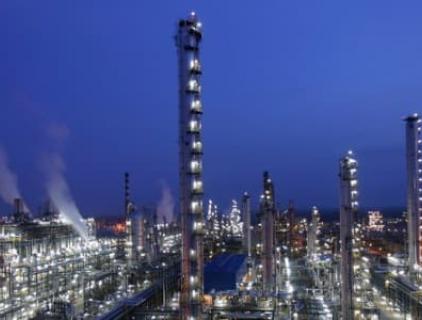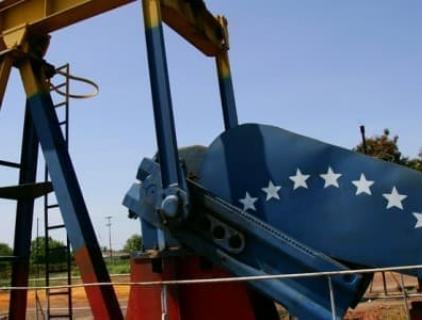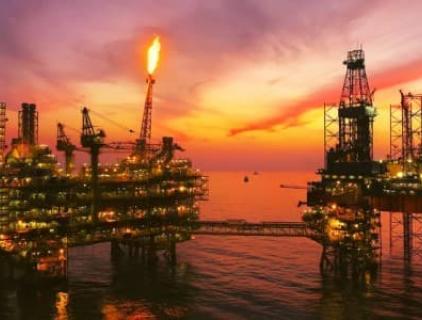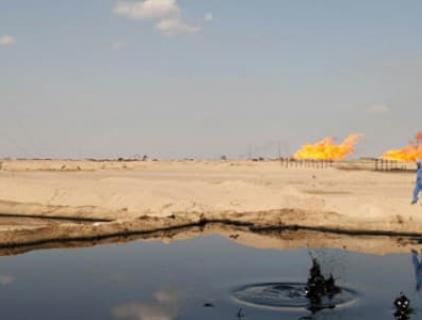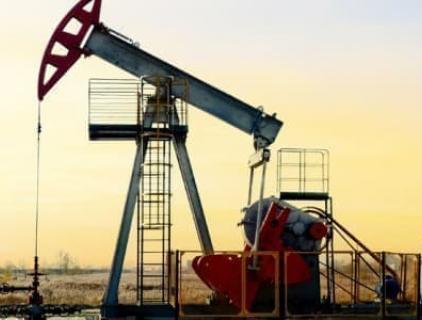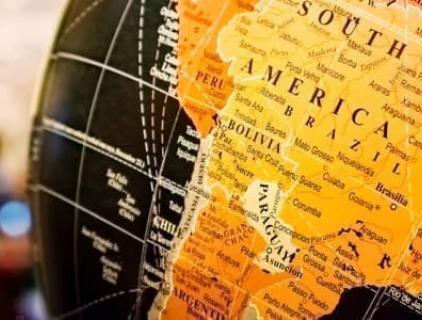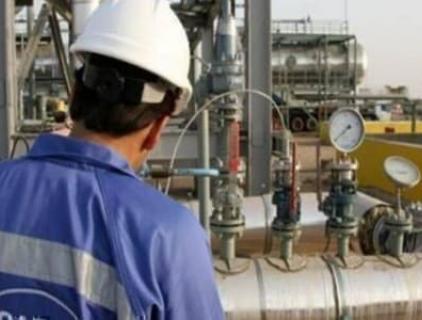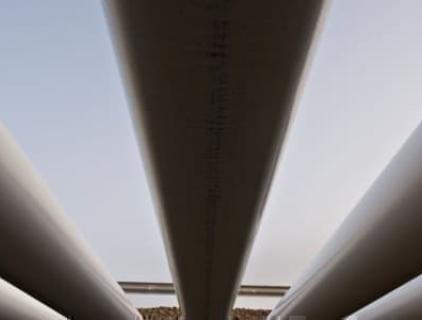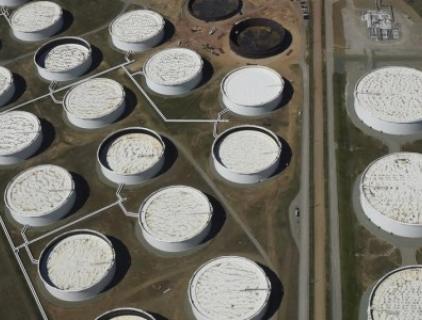Chinese crude oil imports could increase to an average as high as 11.8 million barrels per day.
Reuters: Chinese refineries are raising utilization rates due to lower-cost crude and a surge in demand after the reopening.
China will also see this year the start-up of two new refineries with a combined capacity to process 520,000 bpd of crude.
Reuters: Chinese refineries are raising utilization rates due to lower-cost crude and a surge in demand after the reopening.
China will also see this year the start-up of two new refineries with a combined capacity to process 520,000 bpd of crude.
2023/02/22 08:38
Before the invasion of Ukraine, India was a small marginal buyer of Russian crude oil.
Indian and Russian top energy executives are bolstering their energy ties this week at the India Energy Week.
India’s imports of Russian crude oil are estimated to have hit a record high of 1.2 million barrels per day in December.
Indian and Russian top energy executives are bolstering their energy ties this week at the India Energy Week.
India’s imports of Russian crude oil are estimated to have hit a record high of 1.2 million barrels per day in December.
2023/02/09 19:20
Venzuela is scrambling to capitalize on the global oil shortage, but it’s just not happening.
Despite easing sanctions, the Maduro regime is struggling to ramp up production.
There has been around a month-long pause on crude and fuel exports, as PDVSA demands prepayment ahead of loading cargo, either with cash, goods, or services.
Despite easing sanctions, the Maduro regime is struggling to ramp up production.
There has been around a month-long pause on crude and fuel exports, as PDVSA demands prepayment ahead of loading cargo, either with cash, goods, or services.
2023/02/04 10:12
Offshore Guyana, in as little as seven years, has emerged as the world’s hottest frontier oil play.
Guyana’s appeal to energy investors is bolstered by favorable geology, growing petroleum infrastructure and low breakeven prices.
Guyana’s oil auction is attracting considerable interest with major energy companies from Asia to Europe reviewing the opportunities available.
Guyana’s appeal to energy investors is bolstered by favorable geology, growing petroleum infrastructure and low breakeven prices.
Guyana’s oil auction is attracting considerable interest with major energy companies from Asia to Europe reviewing the opportunities available.
2023/01/28 18:38
Barclays: slowdown in global manufacturing activity could lead to increased downside for crude prices.
Barclays sees an estimated decline in Russia’s liquids output of 700,000 bpd from Q4 2023 to Q4 2024.
Barclays also isn’t writing off a potential boost in demand from China’s reopening.
Barclays sees an estimated decline in Russia’s liquids output of 700,000 bpd from Q4 2023 to Q4 2024.
Barclays also isn’t writing off a potential boost in demand from China’s reopening.
2023/01/11 11:10
Middle East Business Intelligence: West Qurna 2 faces delays.
West Qurna 2 is operated by Russia's Lukoil.
Work on the next development phase of the giant oilfield was supposed to be completed by the end of this year.
West Qurna 2 is operated by Russia's Lukoil.
Work on the next development phase of the giant oilfield was supposed to be completed by the end of this year.
2023/01/06 15:48
Today we’re offering a free glimpse into our monthly Global Energy Alert stock analysis. This report is written by David Messler, one of the top traders in the biz. He’s got a knack for picking winners and a keen eye for spotting ‘em before anyone else. Below, he breaks down two key oilfield service opportunities you’ll want to keep an eye on.
2022/12/28 14:46
Peru’s promising petroleum potential is being threatened as a political crisis embroils the country.
Peru’s oil production has declined sharply since the 1990s, with nearby Colombia and Ecuador garnering the energy investment once destined for the impoverished Andean country.
With fossil fuels providing 72% of all energy used in Peru, it is key for the national government to promote the development of the hydrocarbon sector to prevent an energy crisis.
Peru’s oil production has declined sharply since the 1990s, with nearby Colombia and Ecuador garnering the energy investment once destined for the impoverished Andean country.
With fossil fuels providing 72% of all energy used in Peru, it is key for the national government to promote the development of the hydrocarbon sector to prevent an energy crisis.
2022/12/28 14:39
In recent years India has been a key driver of global energy demand growth, helping to push both oil and gas prices higher.
As central banks around the world hike interest rates, global economic growth is slowing, which will ultimately lead to a slowdown in India’s energy demand growth.
While India may see a slowdown in oil and gas demand next year, its growing transportation sector will drive plenty of demand growth in the future.
As central banks around the world hike interest rates, global economic growth is slowing, which will ultimately lead to a slowdown in India’s energy demand growth.
While India may see a slowdown in oil and gas demand next year, its growing transportation sector will drive plenty of demand growth in the future.
2022/12/28 14:34
EU crude imports from Russia are set to plunge after the import ban of seaborne crude oil on December 5th.
Oil production growth in the U.S. is flattening for a number of reasons.
U.S. crude exports to the EU can only replace a small portion of Russian/OPEC crude.
Oil production growth in the U.S. is flattening for a number of reasons.
U.S. crude exports to the EU can only replace a small portion of Russian/OPEC crude.
2022/12/06 18:45
Colombia’s oil industry is facing multiple headwinds, including higher taxes, plans to end exploration, and its crude reserves running out.
Perhaps the largest headwind is the violence associated with the country’s cocaine trade, as its largest oil-producing areas are also coca-cultivating regions
In Colombia, oil is responsible for 3% of the gross domestic product, 12% of national income, a third of foreign investment, and 34% of total exports by value.
Perhaps the largest headwind is the violence associated with the country’s cocaine trade, as its largest oil-producing areas are also coca-cultivating regions
In Colombia, oil is responsible for 3% of the gross domestic product, 12% of national income, a third of foreign investment, and 34% of total exports by value.
2022/12/02 17:10
Crude oil prices fell today, even after the U.S. Energy Information Administration reported inventories of oil had shed 3.7 million barrels over the week to November 18.
2022/11/26 17:16
Chinese crude oil imports could increase to an average as high as 11.8 million barrels per day.
Reuters: Chinese refineries are raising utilization rates due to lower-cost crude and a surge in demand after the reopening.
China will also see this year the start-up of two new refineries with a combined capacity to process 520,000 bpd of crude.
Reuters: Chinese refineries are raising utilization rates due to lower-cost crude and a surge in demand after the reopening.
China will also see this year the start-up of two new refineries with a combined capacity to process 520,000 bpd of crude.
Before the invasion of Ukraine, India was a small marginal buyer of Russian crude oil.
Indian and Russian top energy executives are bolstering their energy ties this week at the India Energy Week.
India’s imports of Russian crude oil are estimated to have hit a record high of 1.2 million barrels per day in December.
Indian and Russian top energy executives are bolstering their energy ties this week at the India Energy Week.
India’s imports of Russian crude oil are estimated to have hit a record high of 1.2 million barrels per day in December.
Venzuela is scrambling to capitalize on the global oil shortage, but it’s just not happening.
Despite easing sanctions, the Maduro regime is struggling to ramp up production.
There has been around a month-long pause on crude and fuel exports, as PDVSA demands prepayment ahead of loading cargo, either with cash, goods, or services.
Despite easing sanctions, the Maduro regime is struggling to ramp up production.
There has been around a month-long pause on crude and fuel exports, as PDVSA demands prepayment ahead of loading cargo, either with cash, goods, or services.
Offshore Guyana, in as little as seven years, has emerged as the world’s hottest frontier oil play.
Guyana’s appeal to energy investors is bolstered by favorable geology, growing petroleum infrastructure and low breakeven prices.
Guyana’s oil auction is attracting considerable interest with major energy companies from Asia to Europe reviewing the opportunities available.
Guyana’s appeal to energy investors is bolstered by favorable geology, growing petroleum infrastructure and low breakeven prices.
Guyana’s oil auction is attracting considerable interest with major energy companies from Asia to Europe reviewing the opportunities available.
Barclays: slowdown in global manufacturing activity could lead to increased downside for crude prices.
Barclays sees an estimated decline in Russia’s liquids output of 700,000 bpd from Q4 2023 to Q4 2024.
Barclays also isn’t writing off a potential boost in demand from China’s reopening.
Barclays sees an estimated decline in Russia’s liquids output of 700,000 bpd from Q4 2023 to Q4 2024.
Barclays also isn’t writing off a potential boost in demand from China’s reopening.
Middle East Business Intelligence: West Qurna 2 faces delays.
West Qurna 2 is operated by Russia's Lukoil.
Work on the next development phase of the giant oilfield was supposed to be completed by the end of this year.
West Qurna 2 is operated by Russia's Lukoil.
Work on the next development phase of the giant oilfield was supposed to be completed by the end of this year.
Today we’re offering a free glimpse into our monthly Global Energy Alert stock analysis. This report is written by David Messler, one of the top traders in the biz. He’s got a knack for picking winners and a keen eye for spotting ‘em before anyone else. Below, he breaks down two key oilfield service opportunities you’ll want to keep an eye on.
Peru’s promising petroleum potential is being threatened as a political crisis embroils the country.
Peru’s oil production has declined sharply since the 1990s, with nearby Colombia and Ecuador garnering the energy investment once destined for the impoverished Andean country.
With fossil fuels providing 72% of all energy used in Peru, it is key for the national government to promote the development of the hydrocarbon sector to prevent an energy crisis.
Peru’s oil production has declined sharply since the 1990s, with nearby Colombia and Ecuador garnering the energy investment once destined for the impoverished Andean country.
With fossil fuels providing 72% of all energy used in Peru, it is key for the national government to promote the development of the hydrocarbon sector to prevent an energy crisis.
In recent years India has been a key driver of global energy demand growth, helping to push both oil and gas prices higher.
As central banks around the world hike interest rates, global economic growth is slowing, which will ultimately lead to a slowdown in India’s energy demand growth.
While India may see a slowdown in oil and gas demand next year, its growing transportation sector will drive plenty of demand growth in the future.
As central banks around the world hike interest rates, global economic growth is slowing, which will ultimately lead to a slowdown in India’s energy demand growth.
While India may see a slowdown in oil and gas demand next year, its growing transportation sector will drive plenty of demand growth in the future.
EU crude imports from Russia are set to plunge after the import ban of seaborne crude oil on December 5th.
Oil production growth in the U.S. is flattening for a number of reasons.
U.S. crude exports to the EU can only replace a small portion of Russian/OPEC crude.
Oil production growth in the U.S. is flattening for a number of reasons.
U.S. crude exports to the EU can only replace a small portion of Russian/OPEC crude.
Colombia’s oil industry is facing multiple headwinds, including higher taxes, plans to end exploration, and its crude reserves running out.
Perhaps the largest headwind is the violence associated with the country’s cocaine trade, as its largest oil-producing areas are also coca-cultivating regions
In Colombia, oil is responsible for 3% of the gross domestic product, 12% of national income, a third of foreign investment, and 34% of total exports by value.
Perhaps the largest headwind is the violence associated with the country’s cocaine trade, as its largest oil-producing areas are also coca-cultivating regions
In Colombia, oil is responsible for 3% of the gross domestic product, 12% of national income, a third of foreign investment, and 34% of total exports by value.
Crude oil prices fell today, even after the U.S. Energy Information Administration reported inventories of oil had shed 3.7 million barrels over the week to November 18.





